The Bizarre Nest of the Central American Paper Wasp
Wednesday, 15 April 2020
Take a look at the photograph above. Is it some strange kind of blooming plant? Is it a fungal growth attached to a tree? It is something else entirely. This is the bizarre nest of the Central American Paper Wasp (Apoica pallens). It is notable for one thing – an apparent lack of nest altogether. Those pale yellow cigar-shaped objects? They are the wasps, huddled together in neat order, waiting for the evening to come.
Image Credit
The species is native to the lowlands of central and northern South America, so unless you live there you are not going to stumble across something like this in the forest – although whether that is a shame or a relief entirely depends on you. However, these wasps have developed a kind of night vision which means that they swarm and forage only after the sun goes down. Until then, they adopt this position under the comb face of their nest – and it is entirely defensive.
Image Credit
Image Credit
It works. Adopting this alignment allows the wasps to watch out for predatory ants which otherwise might attack and overrun the interior of the nest. Such is its success, it is effectively a passive defense as this formation acts as a deterrent to both parasites and predators alike. Face it, how close would you get to this before the urge to run in the opposite direction took over and you obeyed your instinct?
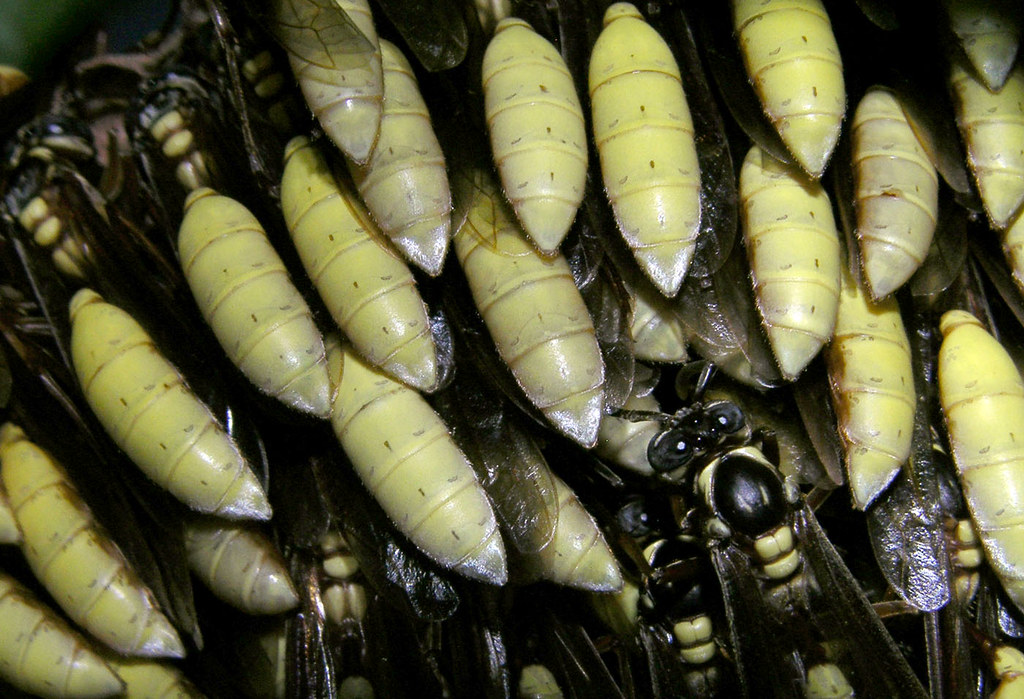
In terms of how and when this behavior evolved, then it’s chicken and egg time, as it were. Did the nest formation happen first or did night foraging? It has been conjectured that the advantages of adopting this kind of protective shield in the day time was what led to the wasp developing its proclivity for nocturnal foraging and swarming. So, the nest formation came first, night foraging later.

It is difficult to decide which is stranger – the fact that apoica have evolved to swarm at night or the fact that their nests have no enclosing envelope. Instead, a single comb hangs under a branch which gives it the appearance of a straw hat. Below you can see how small the actual nest is.
Image Credit
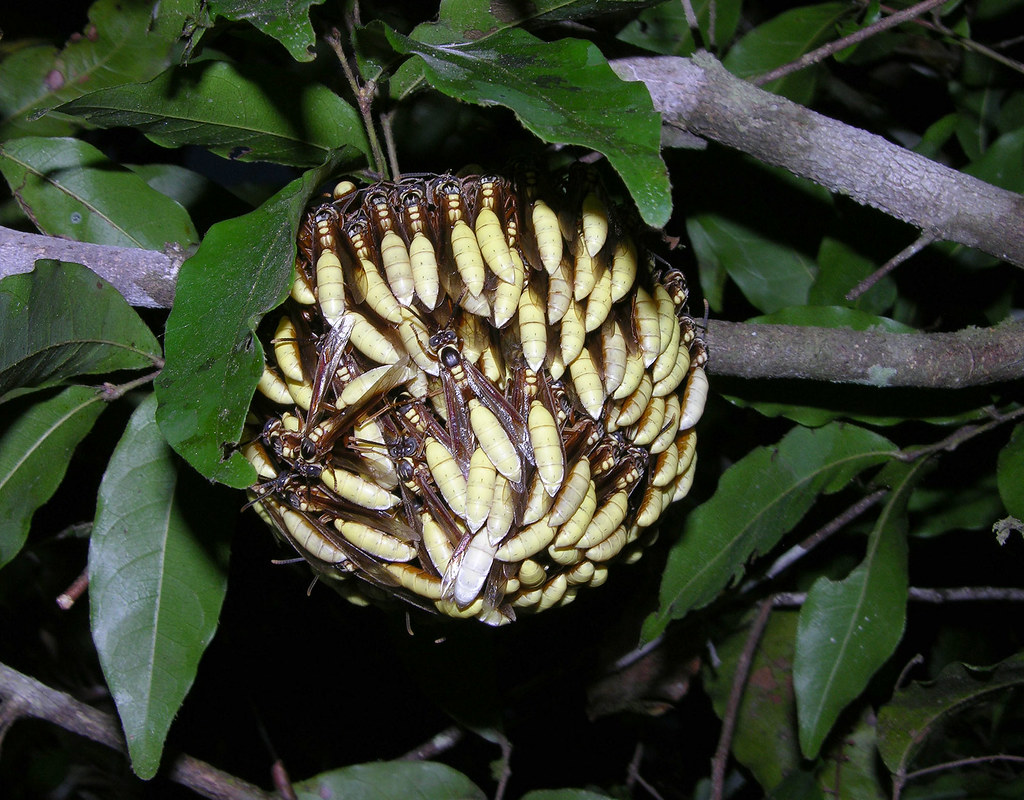
Once night falls it is time to forage. Most of the wasps will leave in what appears like a single coordinated movement, almost as if the nest is exploding. A few will stay behind to defend the nest (in which reside the queens) and then a pattern of rapid return and departure is adopted as the night progresses. The wasps will forage throughout the night with activity peaking just before the sun rises when they all come back to the nest. They then ‘assume the position’ until night once again falls.
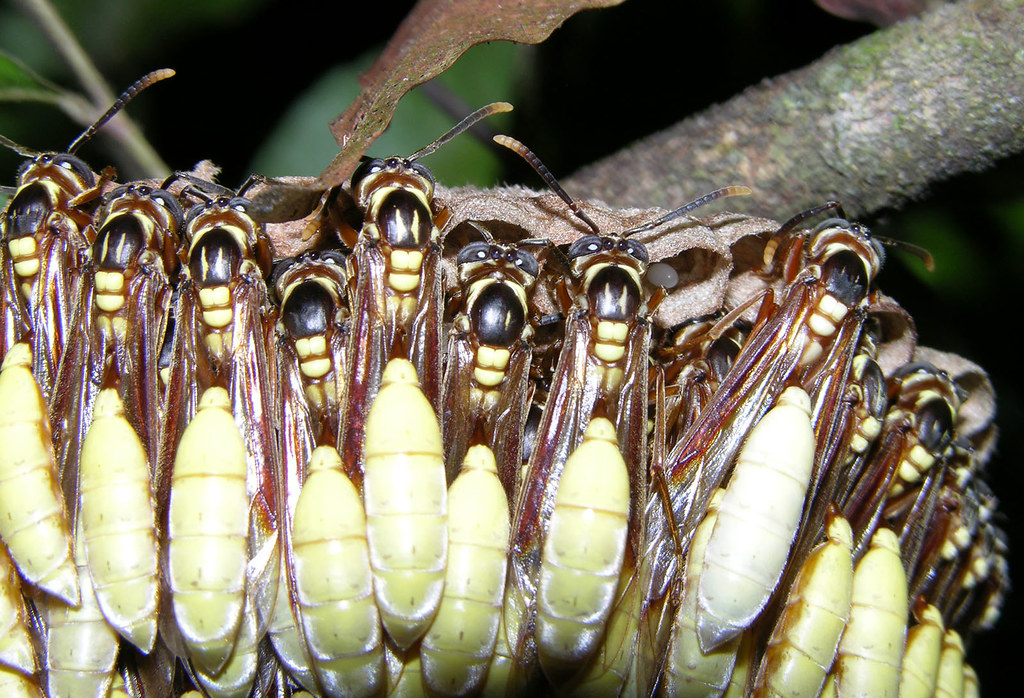
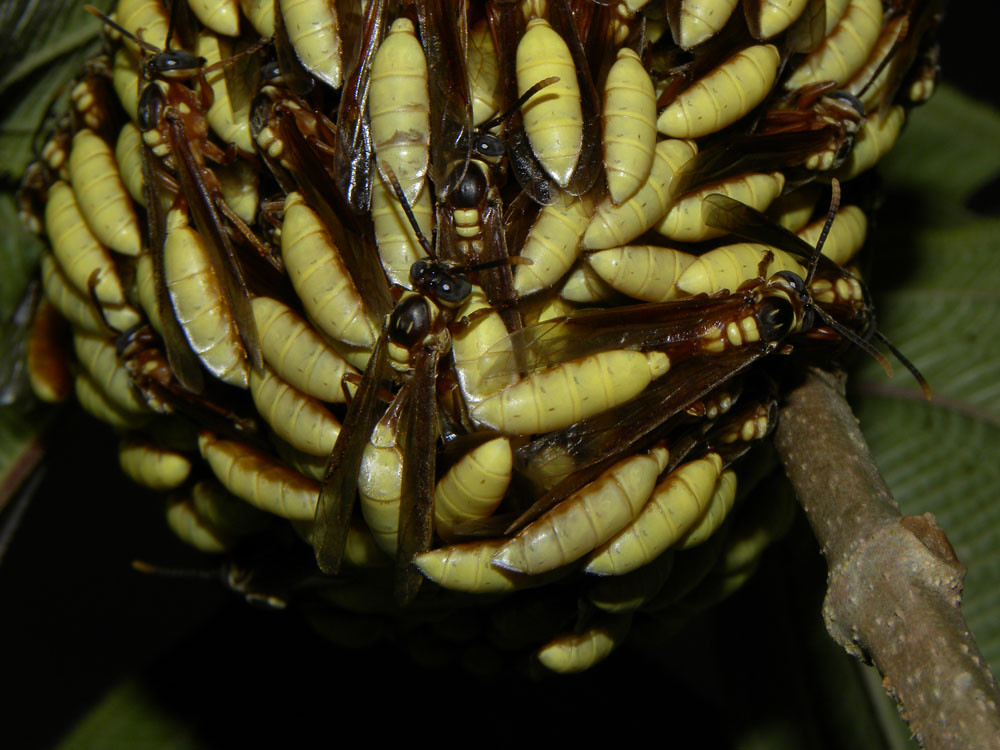
You may have noticed the queens referred to in the plural. Another interesting fact about this species is that it has developed a hierarchy where a number of queens tolerate each other instead of the nest having a single ‘intolerant primary egglayer’. This means that the society of Apoica pallens is one of inclusive fitness and does not involve a struggle for direct fitness between rival developing queens. As such the nest needs a police force and this is provided by sterile workers which select the larvae which will become queens.
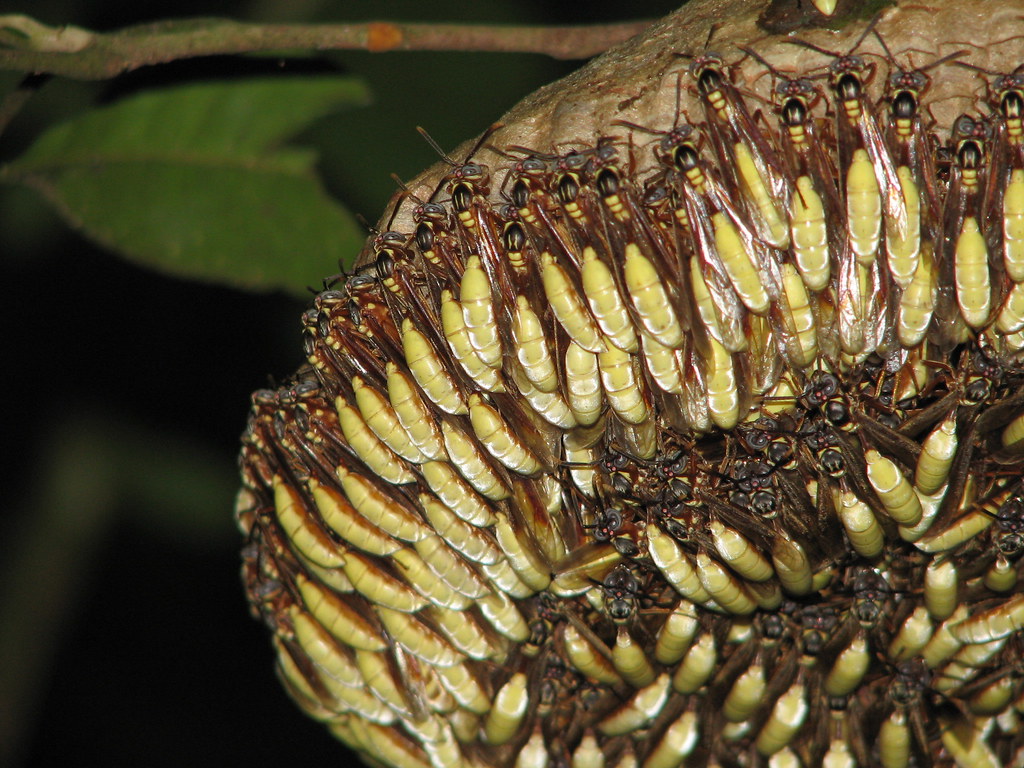
Yet for many people the single most fascinating thing about this wasp will always remain its bizarre but peculiarly beautiful nest.
Image Credit
The species is native to the lowlands of central and northern South America, so unless you live there you are not going to stumble across something like this in the forest – although whether that is a shame or a relief entirely depends on you. However, these wasps have developed a kind of night vision which means that they swarm and forage only after the sun goes down. Until then, they adopt this position under the comb face of their nest – and it is entirely defensive.
Image Credit
Image Credit
It works. Adopting this alignment allows the wasps to watch out for predatory ants which otherwise might attack and overrun the interior of the nest. Such is its success, it is effectively a passive defense as this formation acts as a deterrent to both parasites and predators alike. Face it, how close would you get to this before the urge to run in the opposite direction took over and you obeyed your instinct?

In terms of how and when this behavior evolved, then it’s chicken and egg time, as it were. Did the nest formation happen first or did night foraging? It has been conjectured that the advantages of adopting this kind of protective shield in the day time was what led to the wasp developing its proclivity for nocturnal foraging and swarming. So, the nest formation came first, night foraging later.

It is difficult to decide which is stranger – the fact that apoica have evolved to swarm at night or the fact that their nests have no enclosing envelope. Instead, a single comb hangs under a branch which gives it the appearance of a straw hat. Below you can see how small the actual nest is.
Image Credit

Once night falls it is time to forage. Most of the wasps will leave in what appears like a single coordinated movement, almost as if the nest is exploding. A few will stay behind to defend the nest (in which reside the queens) and then a pattern of rapid return and departure is adopted as the night progresses. The wasps will forage throughout the night with activity peaking just before the sun rises when they all come back to the nest. They then ‘assume the position’ until night once again falls.


You may have noticed the queens referred to in the plural. Another interesting fact about this species is that it has developed a hierarchy where a number of queens tolerate each other instead of the nest having a single ‘intolerant primary egglayer’. This means that the society of Apoica pallens is one of inclusive fitness and does not involve a struggle for direct fitness between rival developing queens. As such the nest needs a police force and this is provided by sterile workers which select the larvae which will become queens.

Yet for many people the single most fascinating thing about this wasp will always remain its bizarre but peculiarly beautiful nest.
Give a Gift
If you enjoyed this article, please consider making a gift to help Ark In Space to continue to bring you fascinating features, photographs and videos.
Thank you!






